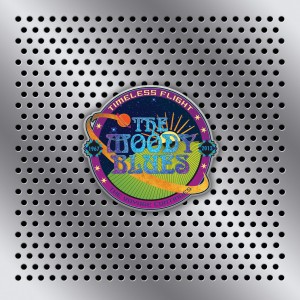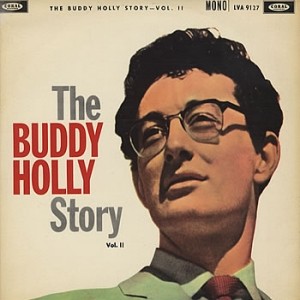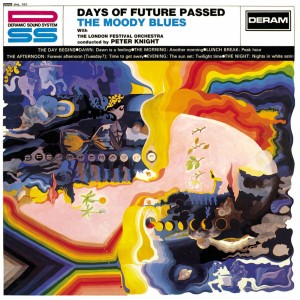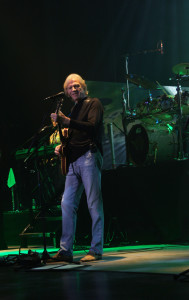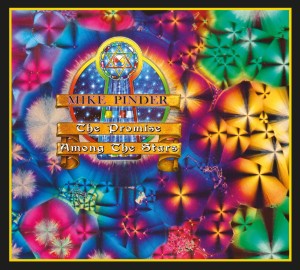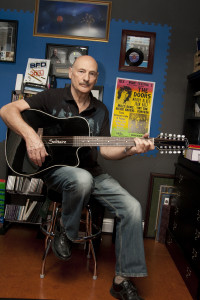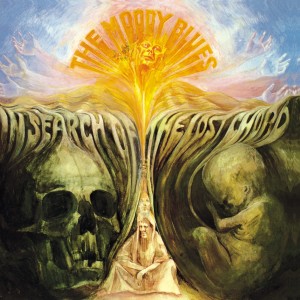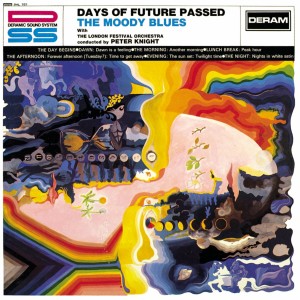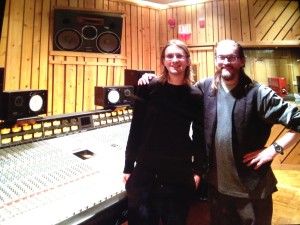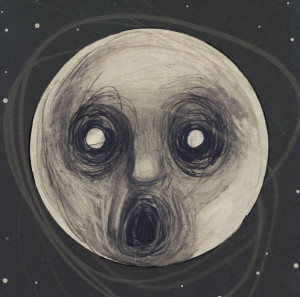“I didn’t have the courage to go back to any of the masters and try to recreate those beautiful, real echoes,” says Justin Hayward of The Moody Blues about the surround-sound mixes he supervised for six of The Moodies’ “Classic Seven” albums: Days of Future Passed, On the Threshold of a Dream, To Our Children’s Children’s Children, A Question of Balance, Every Good Boy Deserves Favour, and Seventh Sojourn. (In case you were wondering, there weren’t any multitrack masters available for In Search of the Lost Chord.) All six of those 5.1 mixes — done by Paschal Byrne and Mark Powell and built on the original quad mixes supervised by producer Tony Clarke and constructed by engineer Derek Varnals — appear in Timeless Flight (Threshold/UMC), the band’s mighty, 50-year-career-spanning 17-disc box set. Yes, there is a more economical 4-disc version ... Read More »]]>
“I didn’t have the courage to go back to any of the masters and try to recreate those beautiful, real echoes,” says Justin Hayward of The Moody Blues about the surround-sound mixes he supervised for six of The Moodies’ “Classic Seven” albums: Days of Future Passed, On the Threshold of a Dream, To Our Children’s Children’s Children, A Question of Balance, Every Good Boy Deserves Favour, and Seventh Sojourn. (In case you were wondering, there weren’t any multitrack masters available for In Search of the Lost Chord.) All six of those 5.1 mixes — done by Paschal Byrne and Mark Powell and built on the original quad mixes supervised by producer Tony Clarke and constructed by engineer Derek Varnals — appear in Timeless Flight (Threshold/UMC), the band’s mighty, 50-year-career-spanning 17-disc box set. Yes, there is a more economical 4-disc version available, but the mondo box is the only way to fly in 5.1 — if you can find one, that is. “I think Universal needs to press a few more copies,” chuckles Hayward.
After recently speaking with former Moodies keyboardist Mike Pinder about the band’s surround-sound proclivities, it seemed only natural to check in with their chief songwriter and lead singer to get his take on how the sound-quality threshold has changed over the years.
Here, Hayward, 67, and I discuss the shift from one to two channels, the birth of FM, his favorite recordings, and his top Moodies-in-5.1 moments. Timeless indeed.
Mike Mettler: As an artist first recording in the ’60s, how did you feel about the transition from mono to stereo?
Justin Hayward: Well, I didn’t even have a stereo unit until around the time of A Question of Balance [1970]. I couldn’t afford one, and I didn’t have space in my little apartment. I was stuck with my Dansette record player. It was when I came to America with The Moodies that I understood how important a good stereo spread was. With the birth of FM radio, all those disc jockeys were crying out for stuff mixed like ours was, instead of stereo recordings with the drums mixed on the right and vocals on the left. And then, of course, you can’t go back. But that didn’t stop me from loving what I had, my old Dansette, and appreciating the mastering of those old singles.
Mettler: Speaking of singles, what was the first record you bought as a kid, do you remember?
Hayward: There were two: “See You Later, Alligator,” by Bill Haley & His Comets [released February 1, 1956] and “Dream Lover,” by Bobby Darin [#1 in the U.K. in July 1959]. We’d go to other people’s houses and play them on their record players, as I didn’t have one at the time. Those were the two I’d take around with me, and we’d all sit around and enjoy those. Those were wonderful times.
Mettler: Was there a record you bought that made you consider, “This is something I want to do”?
Hayward: The Buddy Holly Story, Vol. II, the one with the picture of him with the kind of faraway look in his eyes. [Vol. II was released posthumously in April 1960; Holly died February 3, 1959 in a plane crash in Iowa.] That was the finest thing I’d ever heard. I particularly liked the overdubbed tapes of what he’d done in New York. [a.k.a. The Apartment Tapes, songs recorded in Holly's New York apartment on an Ampex tape recorder in December 1958.] I quite like the way he did that.
Mettler: You listen to the recording quality of songs like “Well, All Right” and “Not Fade Away,” and they still hold up now. He really had his ear on something. And look where it took you — right into a different universe.
Hayward: [laughs] Well, we were very lucky to have a record company like Decca, who believed in excellent recording quality, and London Records, who had their own pressing plant and made quality products.
Mettler: The Moody Blues really helped define the scope and reach of FM radio here in the States. Do you remember hearing one of your songs on the radio in America and getting a sense of what other people were hearing and connecting with?
Hayward: Absolutely. It was a great opportunity for us. We didn’t have FM in the U.K. for so long, but the Americans were well into it. And once the walls had come down, they were totally into it. Of course, you still had AM stations, which were still great. But with that little bit of compression, it always sounded pretty good to me on an FM station.
Mettler: Let’s talk about surround sound. Is there one song or album in the catalog that you would cite as the best example of the full-on 5.1 experience?
Hayward: Yeah, that’s a tough one. I didn’t have the courage to go back to any of the masters and try to recreate those beautiful, real echoes. But it’s still Days of Future Passed that hit it the most. All of the time we were mastering it, I was thinking, “How the hell did we do that?” There’s a song on there called “Dawn Is a Feeling,” where Mike [Pinder] got the mellotron just right.
Mettler: Working with production people like [producer] Tony Clarke and [engineer] Derek Varnals certainly helped get the best out of your sound.
Hayward: Oh, they were really superb. Derek Varnals — I have to credit him with my guitar sound in the early days. On those early records, I played acoustic and electric. He captured all of that just beautifully. I’d put the acoustic lines down first, and then we’d do the electric stuff, maybe with the other guys playing at the same time.
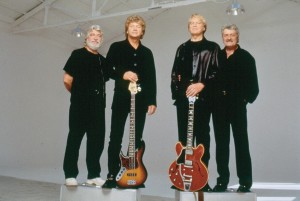
Keyholders to the Kingdom: Early-’90s Moodies, from left — Graeme Edge, John Lodge, Justin Hayward, and Ray Thomas. Photo courtesy Universal Music Group.
Mettler: Are there a few particular examples of Derek capturing just what you were looking for?
Hayward: There’s a song called “It’s Up to You” [on A Question of Balance], where he suddenly nailed it down, and “The Story in Your Eyes” [on Every Good Boy Deserves Favour], which has some exceptional guitar sounds. I was playing them flat-out. He wanted me to play standing in front of the amplifier, a Vox AC30, turn the normal channel up full, and blast it out. That was the sound.
Mettler: And by the time you get to recording a song like “Question,” Tony and Derek have clearly mastered how to capture your acoustic guitar sound on tape.
Hayward: We owe them both a great debt. I still see Derek occasionally. He hasn’t changed.
Mettler: I spoke with Derek for a good 2 hours or so last year, and he was quite generous in sharing the minutiae of recording at Threshold Studios and what he did for the quad mixes; all of those little details. For him to be able to capture and share the full effect of what you poured your heart and soul into recording is just fantastic.
Hayward: I think the quality of engineering went backwards after that. In the ’60s, you had these well-trained engineers, but when people started doing their own things in their own studios — “Ah, I think I can do this!” — they didn’t have the same kind of training. It came down to the stuff being done in the U.S. by the Eagles and Jackson Browne to really bring that quality of recording back again.
Mettler: Good point. In those days, the engineers were doing essentially an apprenticeship with the producers, doing everything hands-on in the studio, learning all the ins and outs. Guys like Glyn Johns —
Hayward: Right. And producer Tony Visconti, who worked with us on “Your Wildest Dreams” [for 1986's The Other Side of Life], was an engineer. There was no other engineer in the studio.
Mettler: Besides the Eagles and Jackson Browne, what other artists made records that sound great to your ear?
Hayward: Well, of course, the kings of that were Steely Dan. Most people would say that. Their stuff was mastered so beautifully, mastered tastefully and not too loud, with the full frequency range. I think the things that were happening in California, a process started by Buffalo Springfield and then Poco, was a really tasteful kind of business.
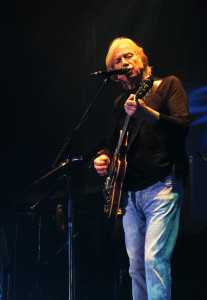
More Than Just a Singer: Hayward plays on at the Mayo PAC in Morristown, NJ, March 5, 2014. Above and below photos by Krista Mettler.
Mettler: It’s good to see you guys resuming your live legacy here in the States in your 50th year as a band. What can we expect from the show this time around?
Hayward: We’re doing things from most of the albums over the years. In the last year or so, we’ve done things we’ve never done onstage, like “You and Me” [from Seventh Sojourn] and “Nervous” [from Long Distance Voyager]. We took a look at our catalog, and we realized how many songs we’ve got that we never, ever played live. We just spent a couple of days in the studio, and then moved on. So that’s been a treasure trove for us. I hope there’s something for everybody.
Mettler: There’s a certain sonic quality we’ve come to expect from a Moody Blues show, which must be foremost in your mind — how that comes across, how the music is presented.
Hayward: It absolutely is. There are great limitations on the building itself — whether it’s conducive to a sweetness of sound, and that’s sometimes frustrating. But I’m a great believer in less is more. I was part of a benefit in San Francisco a few weeks ago for the late Ray Dolby, and it was Jack Vad, the engineer for the San Francisco Symphony, who did the front of house. He was just sensational. When I met him before the show, I said, “I’d like it to be quiet.” And he said, “Oh, I’m so glad you said that.” [laughs] So, yeah, less is more for me, I think.
Mettler: How wonderful Ray Dolby was as an innovator.
Hayward: Oh yes! I didn’t know this until Dagmar Dolby, his wife, shared this with me, but the first Dolby system was put in Decca Studios in West Hempstead [in England], and we were the first group to use it. The only thing I remember from those days was that we had to fill in these forms, and then they’d wheel these big racks into the studio, and you could only have them for a certain time, and then they’d come back and wheel them out again. It changed things forever, and I was very pleased to be a part of that.
And that’s why they’d asked me to be there. I’d just assumed that since he was an American, the system was first used in America, but it wasn’t. She also told me that Decca tried to keep it for themselves. Once it was out of the box, it was impossible to hang onto.
Mettler: Have you been recording any of the shows on the Timeless Flight tour?
Hayward: We did; we recorded one toward the end of last year. I listened to it briefly in the studio last week, but everything’s there. There are some good performances, and it’s tight, so when we get on the bus, I’ll talk about it with the other guys and see what we want to do and release it somehow.
Mettler: Great news. And you’re working on a live Blu-ray and DVD from your 2013 solo tour, right?
Hayward: Yes. I’ve mixed all of the sound, most of the pictures are mixed, and we’re doing a sleeve for it. I’m going to use the same photographer who did my Spirits of the Western Sky album [Marcus Way]. It was a real joy, and a labor of love. I’ve been working with Mike Dawes, who’s just a sensational guitar player. I have to let him do his own half hour before I come on, because you have to see him and hear him. I’m just waiting to see the bonus footage now, because the director had about 8 hours of it, and he’s got to get that down to an hour. It should be out in the next couple of months.
]]>“We would have done surround sound at the time if it had been available.” Original Moody Blues keyboardist Mike Pinder is discussing the always-enveloping signature orchestral sound of the band he was a part of for its first 15 years. Much of the Moodies’ core “Classic Seven” catalog has since seen a series of 5.1 releases in the interim, and Pinder’s innovative usage of the mellotron helped take many of those mixes (“Higher and Higher,” “Watching and Waiting,” “Legend of a Mind”) to the threshold of aural perfection.
Pinder cut his first solo album, The Promise, in 1976, while the band was on a break. After leaving the group 2 years later and concentrating on computer-related projects in California, Pinder eventually followed it up with Among the Stars in 1994. Both releases, along with a behind-the-scenes DVD, are part ... Read More »]]>
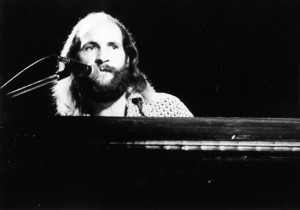
Symphonic Favour: Pinder finding the balance behind the mellotron, back in his days with The Moody Blues.
“We would have done surround sound at the time if it had been available.” Original Moody Blues keyboardist Mike Pinder is discussing the always-enveloping signature orchestral sound of the band he was a part of for its first 15 years. Much of the Moodies’ core “Classic Seven” catalog has since seen a series of 5.1 releases in the interim, and Pinder’s innovative usage of the mellotron helped take many of those mixes (“Higher and Higher,” “Watching and Waiting,” “Legend of a Mind”) to the threshold of aural perfection.
Pinder cut his first solo album, The Promise, in 1976, while the band was on a break. After leaving the group 2 years later and concentrating on computer-related projects in California, Pinder eventually followed it up with Among the Stars in 1994. Both releases, along with a behind-the-scenes DVD, are part of a new Cherry Red/Esoteric Recordings box set named after both albums. Here, Pinder, 72, and I discuss the evolution of production values, the joys of the vinyl experience, and his favorite mellotron moments.
Mike Mettler: Did the changes in recording technology in the almost 2 decades between the time you worked on and composed these two solo albums play a role in your production choices?
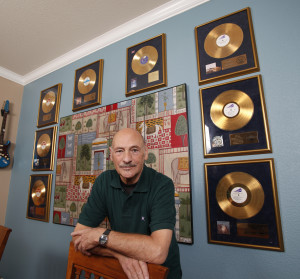
To Our Children’s Children’s Children’s Walls: Pinder at home, surrounded by many of his gold achievements.
Mike Pinder: Of course. We used to have to layer guitar, strings, piano, flutes, drums, percussion, and any other orchestral instruments we wanted with the use of two 4-track machines. We would lose quality as we bounced things down to make room for the next instrument. Mixing often had to be done in the moment. Look how far we have come with production techniques in 40 years. One of the best things to come out of new technology is the home studio. Home recording was out of reach for most musicians of my generation. Now it is a more level playing field with writers being able to create without the support and funding of a record company.
The only negative that comes from anyone having access to home recording tools is that listeners have to find the talent today. You would think the Internet would make it easy to find great songwriters, but I find it is just the opposite. There are too many semi-talented people writing and recording music. It is a nightmare to wade through dozens or hundreds of songs to find a gem or a songwriter who is saying something. If record companies were not so vapid, greedy, and corrupt, they would serve a purpose, if only to act as scouts to filter the talented to the top – kind of like the record companies in the ’60s. And there is always room for an array of musical talent, from The Beatles to The Moody Blues. We were all musically varied in our approach. It was not a homogenous, one-size-fits-all musicality.
Mettler: What are your favorite songs on these records? I happen to be partial to The Promise’s “You’ll Make It Through” and “Air,” as well as Among the Stars’ “World Today” and “Waves Crash,” to name but a few. And, of course, it’s also nice to hear [ex-Moodies member] Ray Thomas’ signature flute on one of the bonus tracks, “Empty Streets.”
Pinder: I recently listened to “World Today” myself, and I am sad to say, not much has changed in the world since I wrote that in the ’90s. I would like to see our world at peace and an end to hunger on our planet in my lifetime. I really liked the instrumentation and jazz-rock fusion that I achieved on that song. I had great players on that album who, like me, grew up with blues, jazz, and rock influences.
And this box set was a lovely opportunity for me to include two songs, “Waves Crash” and “Empty Streets,” written by my sons Michael Lee and Matt, a.k.a. The Pinder Brothers. They are both outstanding musicians and writers. Our longtime Moody Blues producer, the late Tony Clarke, produced those tracks, and it was great to have Ray Thomas playing flute too.
Mettler: Are you still a vinyl fan? Do you feel analog is the best way of listening to music?
Pinder: I still like the warmth of the vinyl experience. This is something that is just not captured in any contemporary medium. My friend Tom still has an extensive vinyl collection. In fact, Tom and I recently listened to Horowitz at Home on Deutsche Grammophon and had this same conversation. I also love the beauty of the album artwork and reading liner notes about the musicians as I listen to the music.
But I have also enjoyed all the advantages that technology has brought us. I do like the compactness of CDs and the easy access of digital. It is very convenient to send tracks over the Internet and have a library on a thumb drive.
Mettler: What did you listen to when you were growing up? Do you recall the first record you bought with your own money?
Pinder: I was the youngest of four siblings and listened to records my sisters bought. The first recordings I had access to ranged from songs by Nat King Cole to the orchestration of Mantovani. I also listened to a lot of radio. I loved radio and what I call the “theater of the mind.” I loved comedy and listening to The Goon Show with Peter Sellers and Harry Secombe. The first record I remember buying for myself was “Rock Around the Clock,” by Bill Haley & His Comets.
Mettler: Is there a particular favorite mellotron performance of yours on record with The Moody Blues, one that you feel is the best in terms of sound quality?
Pinder: [Producer] Tony Clarke, [engineer] Derek Varnals, and I were always trying to create new and innovative sounds. A good example of my signature mellotron swoops are in Ray Thomas’ song, “Legend of a Mind” [from 1968’s In Search of the Lost Chord, perhaps best known for its “Timothy Leary’s dead” refrain]. I used the speed control on my Tron to create the swoops, and we would take advantage of the stereo effects to make the mellotron sound and the movement come from one side to the other side, i.e., left-right, and right-left. And I would use the reverb to make it come forward and back in the track as well. The listener would get an almost-3D sound that was unique for that time.
Mettler: Speaking of that, how do you feel about the various surround-sound mixes in the Moodies catalog? Personally, I feel the 5.1 mix for Days of Future Passed gave extra breadth to the dimensionality inherent in the original recording itself – especially your parts on “Dawn Is a Feeling,” and what both the band and the London Festival Orchestra played on “Nights in White Satin.”
Pinder: I agree. I love the surround-sound mixes. We would have done that at the time if it had been available.
Mettler: Did you also like the quad mixes Clarke and Varnals shepherded back in the day?
Pinder: Derek always did a wonderful job. He was innovative and talented. He and Tony Clarke were adept at driving the ship. We were all very committed to our music and it was an adventure. Lots of fun and laughs as well. Everyone worked very hard. We had creative freedom, and we were fortunate to be allowed to try new things. It was our musical wonderland.
Mettler: Finally, how do The Promise and Among the Stars sound to your ears now, a few decades later?
Pinder: I am really grateful to listen back to my music and feel it stands the test of time. I always wanted to create melodies, counter melodies, and arrangements that connected with people and tell shared stories of our humanity. We all have the same hopes, dreams, and loves. It is the job of the writer to tap into the collective consciousness of the listener with the story interwoven with melody and an orchestral backdrop.
I don’t think a true artist can follow trends. I always tell young people to just write from your center and paint the picture your way. It will ring true with someone.
]]>Just when you think Steven Wilson is at the surround sound pinnacle, he ratchets it up another level.
I first heard The Raven That Refused to Sing (and Other Stories) at a playback session in New York’s Avatar Studios back on January 15, 2013. And this is how you know I’m super-hardcore dedicated to championing the glories of 5.1, since January 15 was literally the day after I had returned from a full, exhilarating but exhaustive week at CES in Las Vegas. But nothing was gonna stop me from hearing Raven in the best environment possible.
Right from the outset of that listening session, I (and everyone in the room) knew Raven was something special. Since then, I’ve played the album countless times, and I can unequivocally say that the 96/24 LPCM Blu-ray mix of The Raven That Refused to Sing ... Read More »]]>
Just when you think Steven Wilson is at the surround sound pinnacle, he ratchets it up another level.
I first heard The Raven That Refused to Sing (and Other Stories) at a playback session in New York’s Avatar Studios back on January 15, 2013. And this is how you know I’m super-hardcore dedicated to championing the glories of 5.1, since January 15 was literally the day after I had returned from a full, exhilarating but exhaustive week at CES in Las Vegas. But nothing was gonna stop me from hearing Raven in the best environment possible.
Right from the outset of that listening session, I (and everyone in the room) knew Raven was something special. Since then, I’ve played the album countless times, and I can unequivocally say that the 96/24 LPCM Blu-ray mix of The Raven That Refused to Sing (and Other Stories) has wiped the surround slate clean and set the benchmark anew. Yes, it’s that bloody good.
(Oh, sure, you can also select the DTS-HD Master Audio 5.1 option if you wish, but 96/24 is the way to go. And, naturally, there’s also a wonderful-sounding vinyl release if you want to take Raven out for a double-disc 180-gram spin in stereo.)
One of the reasons Raven cuts such a wide aural swath is that the man and his associate producer and recording engineer, Alan Parsons, captured the core of Wilson’s Grace for Drowning touring band performing live off the floor at East West Studios in Los Angeles in September 2012. (You can watch the band at work in the “Studio Documentary” that was shot by longtime Wilson visual collaborator Lasse Hoile in the Blu-ray’s Bonus section.) The intuitive muscle of that band, buttressed by the addition of lead guitarist Guthrie Govan, comes through in the improvs and overall natural mastery of A-level material.
Raven commences with the 12-minute hard-charger “Luminol,” with a Nick Beggs-driven bass line leading the way while Guthrie’s guitar swatches ping-pong in the fronts and Theo Travis’s flute lines swirl around your head until the instrumentation halts and a massive, layered vocal bed swoops down on you. And then Wilson deploys the King Crimson MKII mellotron as Beggs’s bass returns to the center stage (and the subwoofer channel) before giving way to keyboard wiz Adam Holzman. The second movement begins with an almost buried “Planet Caravan”-like guitar line setting the stage for the verses. Drummer Marco Minnemann deftly Bruford-izes a Yes-like passage that’s anchored in the rear channels, and there’s an elegiac vocal harmony section that would make Crosby, Stills and Nash proud. And as I noted in my Top 25 Songs of 2013 list, “Luminol” is officially my personal favorite benchmark 5.1 demo track.
The tone downshifts a bit with Track 2, “Drive Home.” On the verses, Wilson’s near-falsetto vocal warble weaves around his acoustic guitar figures, while the track opens up wide on the choruses thanks to the all-channel reach of the London Symphony Orchestra string section, conducted by Dave Stewart (as in Hatfield and the North/National Health Dave Stewart, not onetime Eurythmic Dave Stewart). In November 2013, Wilson released a Drive Home Blu-ray EP that includes hi-res live tracks, a new track (“The Birthday Party”), remixes, and video footage, and it’s well worth picking up as your official Raven companion.
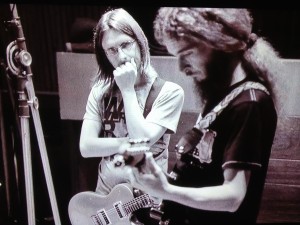
Holy Thinker: Wilson contemplates Govan’s licks in the East West Studios sessions in Los Angeles, September 2012.
Track 3, “The Holy Drinker,” opens with shimmery, Twin Peaks-ian keyboard riffage that leads into snarling guitar, a left-turn cool down, and an eventual full-channel pummeling that’s a twisted cousin to the sinister undertones of Drowning’s “Index.” (And, uh, those outro, rear-channel howls? Chilling.)
“The Pin Drop,” Track 4, is another tone break, commencing with a dreamy, clockwise, Gilmour-ian guitar line as Wilson vocalizes high notes in the center channel before a full-band, full-channel assault hits you at 1:15, with drummer Minnemann just tearing it up in the rears and Travis’s lofty sax solo wafting all around you.
The epic Track 5, “The Watchmaker,” begins plaintively, Wilson’s guitar delayed front to back as he starts singing the verses, his doubled vocal lines emphasized in the rears. The aforementioned mellotron makes a welcome return to echo a vocal lilt before the middle movement commences and picks up the pace, Minnemman’s cymbal work sharp in the rears with the rest of the band filling in — Travis’s flute and Holzman’s organ setting the stage for Govan’s down-the-middle overdriven solo. Another movement commences with lush, overlapping harmonies until mellotron and band absolutely envelop and crush you with their abject power.
Raven’s titular last call, Track 6, balances yearning piano, vocal pleading, wistful clarinet, and the rise, fall, and rise of the strings. It’s Wilson’s most heartfelt, raw-emotion-invoking song since Porcupine Tree’s Stupid Dream closer, “Stop Swimming.” After seeing “Raven” performed in live quad at the Nokia Theater in Times Square in NYC back on April 26, 2013, Holzman’s wife, ace guitarslinger Jane Gitter, told me backstage, “It made me cry.” (Me too — but, uh, don’t tell…)
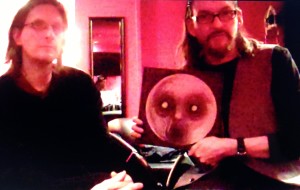
Raven-ettes: SW & MM & Raven vinyl, in a still from our video interview that will post in early 2014.
The breadth and scope of Raven represent Steven Wilson at the height of his creative powers, where surround sound music and mixing has reached a heretofore unheard aural apex. Our ever-searching ears are lucky to be consistently challenged and rewarded by this man’s muse.
What”s next for the Surround King? Well, I spoke with Wilson recently about his colossally satisfying 5.1 Blu-ray mix for Yes’ Close to the Edge, his upcoming surround projects, and his view of the future of high-resolution audio, and you’ll see the full breadth of our Q&A in The SoundBard Interview in early 2014. Until then — happy immersive listening!
]]>

